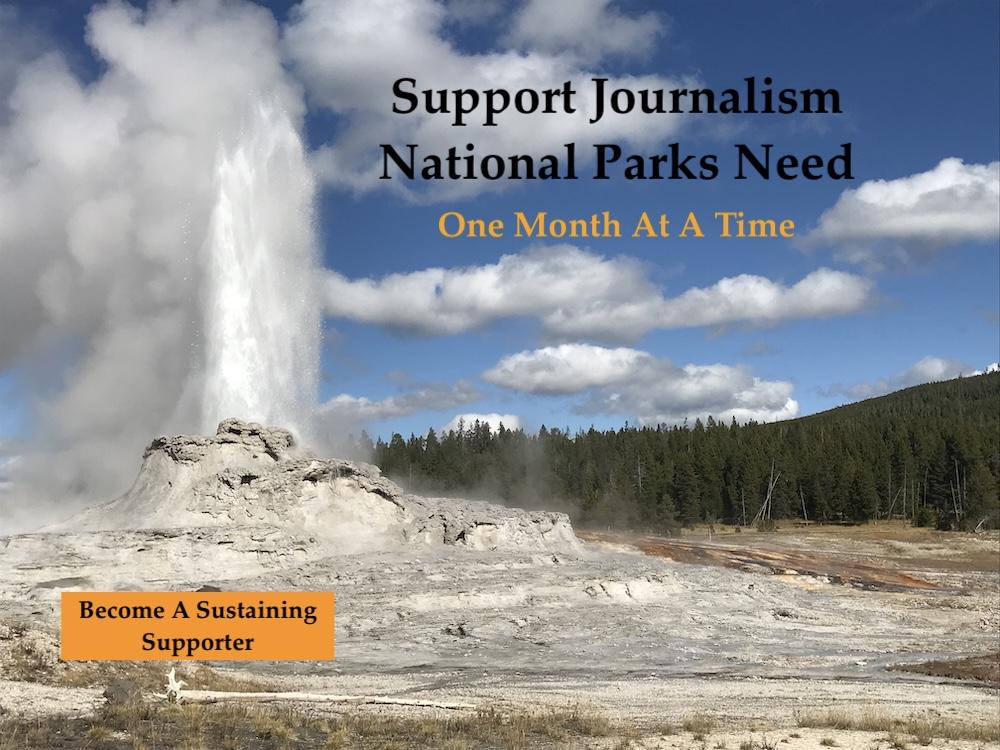
The Norris Geyser Basin, the hottest, and most dynamic, of Yellowstone's geyser basins/NPS
Hot trails, swarms of earthquakes, and now melting roads. All are examples of the geothermal dynamics of Yellowstone National Park and evidence that the park's landscape is anything but static.
Last September there was a swarm of more than 100 earthquakes in the park, early in 2010 more than 1,200 earthquakes were detected in little more than a week's time, and back in 2008 the park had to temporarily close the Artists Paint Pots thermal area area after a visitor broke through a patch of thin crust and received burns to one of her legs.
The most recent surfacing of the park's geothermal furnace came last week along Firehole Lake Drive, where a combination of the hot ground and warmer-than-usual air temperatures -- in the 80s, Fahrenheit -- actually melted sections of the asphalt road.
While road crews rather quickly repaired the damaged areas by digging them out and laying down a mix of sand and lime to soak up the oil melted out of the asphalt, what to do down the road remains a matter of discussion for Yellowstone officials.

Hot ground and hot air, combined to melt sections of the Firehole Lake Drive/NPS
'We always have hot ground. We got hot air that went with it, and we have a section of pavement that reacted to those conditions and got bubbly and sticky," Al Nash, Yellowstone's chief spokesman, said Monday. "In talking to our staff today, there certainly are questions about whether we might need to make some changes to some of those roadways."
One possibility, he said, would be to simply replace sections of asphalt that melt with gravel.
'You wouldn't have that asphalt material to get hot and get sticky and bubble," he said. "The road is not over an area that is thin. It's just hot. This is not a thin crust area, but it does go through some sections that have some fairly hot ground. If we were concerned about the crust, we wouldn't be in the position to reopen this road in just a couple of days.'
Back in 2008 the park did have to temporarily close the Artists Paint Pot area near Norris due to ground heat. In that incident, a Utah woman was injured while hiking on the established dirt trail with family members when she stepped in a surface puddle of rainwater along the edge of the trail, and the surface crust gave way. The woman's foot broke through into a previously undiscovered pool of hot water and received burns to her ankle and lower leg. The water in the pool is 171 degrees Fahrenheit and was found to be slightly acidic, with a pH similar to vinegar.
"It is a very dynamic place, and things are changing," said Mr. Nash.

 Support Essential Coverage of Essential Places
Support Essential Coverage of Essential Places






